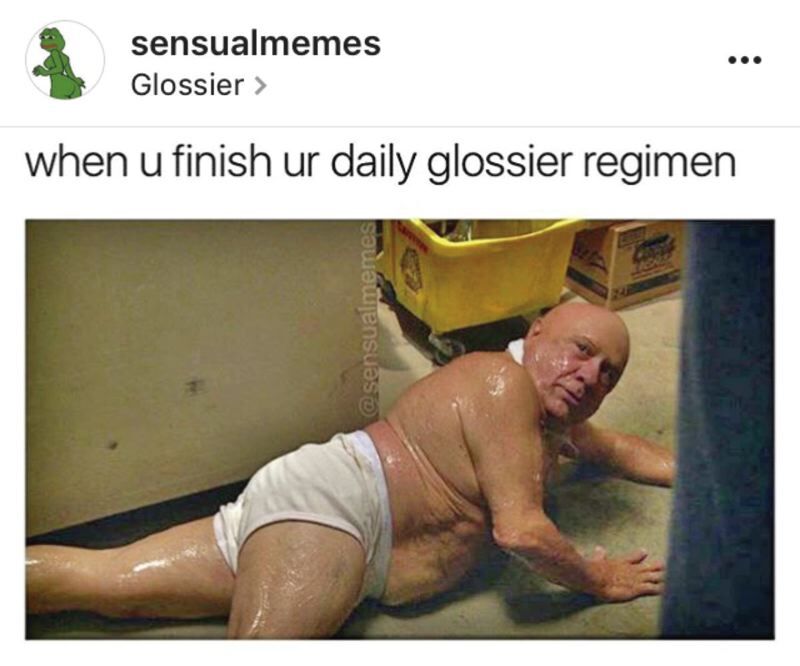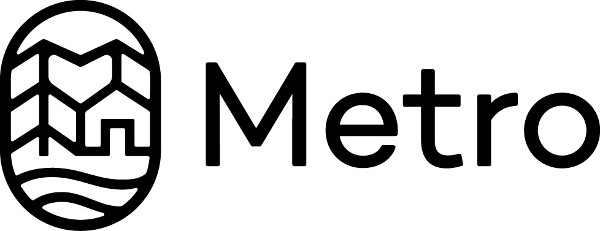Torch is lit, Glossier maybe
Published 12:00 am Wednesday, April 12, 2017

- The Glossier brand gets memed by Sensualmemes of Portland.
In 2016, Paul Reynolds moved to Portland from Fort Lauderdale Florida because of the virtual reality scene here.
Trending
He had a good job in sunny Broward County. He was technical director in the content group, as employee number 70-something, at Magic Leap. That’s an augmented reality company best known for raising $1.4 billion in venture funding and hiring several hundred people in 18 months. Reynolds is rare hybrid animal, software developer with design skills, a product guy as well as a strategy guy, but at Magic Leap the job turned into managing hundreds of software developers and lost its thrill.
Reynolds thought about opening a Magic Leap Portland office — the owners wanted him to stay — but the commute for the monthly decision-making meetings would be deadly. (There’s only so much you can do with video conferencing and sometime beer goggles trump VR goggles when it comes to bonding.)
So, he spun up, as they say, his own company, one that would make it easier for designer to use the 3D software used in making virtual reality.
Wayback machine
But first a bit of history. He sees Portland a significant player in the web and mobile software revolutions.
“Not as the birthplace and not even as an epicenter of the moments of revolution. When iPhone and Android stabilized as the two primary smartphone platforms, once all that froth settled down it became how do we extract value out of those platforms with software. And Portland has an interesting culture around open source software, community and sharing, but also craftsmanship and design. So when it comes to pushing the design and user experience of these things, that’s when Portland tends to shine.”
The same with the rise of the web. “Portland was not the home of Yahoo! And AltaVista but when the time came for very thoughtful design and user interface, that seems to be where Portland has shone.”
He singles out Small Society as an example of mobile development, which came out of Raven Zachery’s independent iPhone developer conference iDevCamp. (Raven Zachery’s current gig is as boss of Object Theory, an augmented reality content company. Small world.)
Names
“My world has been augmented and virtual reality for the last six years.” If VR is the next great platform, he wasnts to ame sure Portland is again central. “I want to use my expertise and credibility to point to Portland and say this ‘We’re going to do this here, this is going to be a hub with an emphasis on design.'”
He name checks Wieden + Kennedy, Panic Software, Urban Airship as good Portland example. (He worked on a video game with Wieden + Kennedy for Laika’s movie “Paranorman”.
Reynolds now runs Torch with another Magic alum, Josh Faust. Reynolds describes it as a platform to make 3D development easier and more accessible.
Game makers know how to create in 3D. “But we watched a lot of really talented, creative people completely stymied by the learning curve. Part of that is the tools — the only real interactive 3D tools are video game-oriented. So if you’re a senior designer at Wieden and you’ve built word-class mobile applications, and all of a sudden you are tasked with building a 3D user interface, it’s almost impossible for a lot of people.”
It’s a different workflow, and a different mentality. A common complaint about 3D work is its very game-leaning and shallow.
“There’s no application now that would make me want to get into a headset every day and get work done.”
That’s a definitive judgment on the state of VR/AR right now, since in the U.S. productivity is the state religion.
Pain
His software is about eliminating the major pain points in learning and using 3D design software.
Reynolds started out as a graphic designer, using Quark Xpress and PageMaker at the Sun News Knight-Ridder newspaper in Myrtle Beach, South Carolina. He was on the advertising side but moved over to news when asked to design their website. “This was the 1990s when building web pages was like a magic trick.”
As he got into managing the web team he realized he got the same pleasure from software development as he did from design. It’s a position that has come to fruition with Torch.
“Graphic design used to be the icing on the cake, but in the last five years it’s become integral to the product development process. That’s why you have agencies like Instrument, Wieden and Ziba helping deign the products.”
Stone Age tools
So now that companies are asking for VR as well as mobile apps, designers are running into a brick wall. “None of my tools make sense for VR, they don’t even work. How do I even experiment with this, how do I prototype?”
For example Facebook. Torch visited Facebook’s VR team (separate from the Oculus Rift team), who come from the mobile and web world. They need a broad appeal in their VR version of Facebook (yes, granny, get your goggles).
“They feel the same pain that we’ve observed. It was a revelation for us.”
If Facebook needs something, that’s usually a business model right there.
“It’s a prototyping environment where a designer doesn’t require an engineer to be able to knock together some ideas, lightly test them and communicate the interaction. That all needs to be within the designer’s control. That is true for the workflow for 2D, and now they’re in 3D and it’s like they’re back to the Stone Ages. The tools are too complex to use, to they team up with an engineer, and it’s back to pen and paper and saying ‘I want to do this…’ It wastes a lot of time.”
Paper crown
Imagine the set up: Cadillac or Pringles gets the 3D bug and asks its agency to make a VR environment, for an ad or an executive retreat. They would use the usual gamers VR engine, such as Unity. But the designer has to become an amateur game developer to be productive with it. Most people just give up.
He says 3D designers currently sketch on paper. “They might even sketch on a big piece of paper and hold it around their head and pretend like they’re looking around it.”
There is no jpeg of 3D. “You could accidentally grab a file that is meant for 3D printing or architecture that is not going to run in a video game engine, or there’s a proprietary file format that’s not going to work.”
So Torch will attempt to address this one of many pain points for designers, with its proprietary software.
The target market for now is UX designers. Architects are champing at the bit too: He also mentions Wild (builtbywild.com) a Portland VR firm which is targeting architects to drop clients into VR worlds.
It’s the usual software as a service (SAAS) model is SAAs, within individual monthly tiers, enterprise tiers. Torch is about to raise its first round of investment this month. After three months of evaluating and talking to investors.
“I can’t tell if it’s two years or 10 years, but computers as we know them now are going to go away — keyboards, mice, screens, phones…the way we interact with technology is going to be fundamentally different. We’re banking on the 3D interface. But we’re not pitching to one platform, we’ve boiled it down to this 3D thing.”
Glossier than thou
Glossier is a makeup brand. It’s slightly shiny, “no makeup” makeup, the opposite of the Marc Bolan glitter you see on YouTube boys and the heavy blush on girls at bus stops. Or as they put it, “We’re Glossier, a beauty company inspired by what girls need in real life.” It’s the wet seal look, at more than drug store prices but less than Estee Lauder.
For all its tactile intimacy, Glossier has virtual roots. It started out as a blog, Into the Gloss, vehicle for the fashion opinions of Emily Weiss. She thought she could do better and turn a media brand into a lifestyle product and 80 employees later, the company is shipping foundation and lipstick all over the world.
It is a pure e-tailer, but in March a few Glossier envoys toured the country looking at brick-and-mortar stores where they might sell some product or maybe even open their own store. In Portland, they checked in with House of Lolo, North of West, Frances May, Backtalk and Wildfang. They rented a booth in Pioneer Courthouse Square, where passers by could try product, but not buy it. A few dozen influencers — that murky world of people who know people, and people who blog for free product — came to the restaurant Chesa in Northeast Portland to meet the Glossier girl-women and smell the flowers. (Pink is their color.)
Before social media this would not have happened. The Glossier Instagram, which is all you need really to reach young women, has 482,000-plus followers.
No word yet on whether it will cross over from virtual to real, but look for traces on the faces near you.





